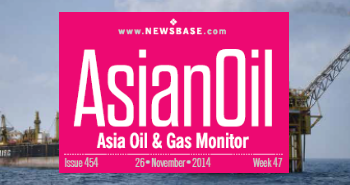CNOOC makes major oil and gas find in South China Sea

China’s monopoly offshore oil operator CNOOC announced a major discovery in the Huizhou 19-6 oilfield in the eastern South China Sea on March 31, raising the field’s proven in-place volumes to over 100mn tonnes (733mn barrels) of oil equivalent.
The state-owned company said exploration well HZ19-6-3 encountered 127 metres of oil and gas pay zones at a depth of 5,415 metres. The well tested at 413 barrels of oil and 2.41mn cubic feet (68,240 cubic metres) of gas per day. The discovery confirms Huizhou 19-6 as the largest integrated clastic oilfield in the northern South China Sea in terms of original oil in place (OIP), according to the company.
Located in approximately 100 metres of water, the oilfield’s main reservoirs are in the Paleogene Enping and Wenchang formations, producing light crude.
“This discovery breaks the traditional theoretical understanding and demonstrates the enormous exploration potential of deep and ultra-deep plays in high-temperature, highly active basins offshore China,” said Xu Changgui, CNOOC’s chief geologist. He added that the breakthrough followed years of research on deep and ultra-deep exploration in the region.
CNOOC CEO Zhou Xinhuai noted that major oilfields with over 100mn tonnes (730mn barrels) of oil in place have been discovered in the last two years, calling it a new driver of offshore production growth.
The Huizhou 19-6 find follows another 2024 discovery at the Weizhou 10-5 oilfield. The WZ10-5-1Sa well, drilled to about 4,840 metres in 37 metres of water, encountered 283 metres of pay. It tested at 13.2 mmcf (373,800 cubic metres) of gas and around 800 barrels of oil per day. CNOOC described the find as a significant breakthrough in natural gas exploration in the granite buried hills of the Beibu Gulf Basin, also known as the Gulf of Tonkin.
“The breakthrough in the exploration of Palaeozoic granite buried hills reveals vast exploration prospects in the Beibu Gulf Basin,” Xu said.
CNOOC reported 11 new oil and gas discoveries and appraised 30 structures globally in 2024, increasing its net proven reserves to 7.27bn barrels of oil equivalent, up 7.2% year on year.
The company said it continued to innovate exploration theories and technologies, with discoveries such as Longkou 7-1, Qinhuangdao 29-6, Huizhou 19-6, and Lingshui 36-1 made under updated models. Internationally, it expanded its exploration presence along the Atlantic Rim and in Belt and Road countries, securing petroleum contracts for 10 blocks in Mozambique, Brazil and Iraq.


Follow us online